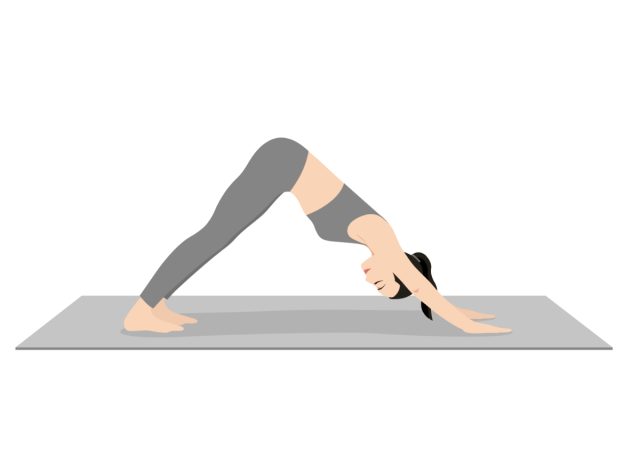Sydney’s ocean temperature rarely drops below 15C, but the region is home to a growing number of ice swimmers who bask in the glow of a long swim in 5C water.
“People don’t think that we have the base for ice swimming, but we actually do have these locations we can do it in,” says Wyatt Song, who has spent much of the winter mentoring ice mile hopefuls at Wentworth Falls Lake in the New South Wales Blue Mountains, 95km from the city.
“It’s one of the best places swimmers can go because the water temperature can drop to 6 or even 5C in the winter, mainly because of its altitude.”
In 2014, the former Bondi lifesaver became the first Australian to complete an ice mile, swimming 1.6km in 4.5C near Falls Creek in Victoria in 42 minutes 30 seconds. He has since swum 1km in 0C Antarctic waters and completed two more ice miles.
To qualify, swimmers must swim 1.6km unassisted in water that is 5C or less wearing a standard bathing suit, goggles and silicone cap, as set out by the International Ice Swimming Association.
Song’s training routine included trips to Russia, Finland and the US as well as ice bath plunges. Now a resident of Wentworth Falls, he informally coaches around a dozen ice swimmers each winter, a number that he says is slowly growing. Around half of them have gone on to swim an ice mile and 29 Australians have so far completed the challenge. Armidale swimmer Peta Bradley completed an ice mile in just over 31 minutes in Thredbo in the Snowy Mountains last September.

Song believes Australia’s love of – and success in – swimming, combined with its cool lakes in Victoria, Tasmania and high-altitude NSW, could one day spell international dominance in the emerging sport. Still, its extremes put the body through a series of physical rigours that can prove fatal.
Moments after a swimmer enters the water, vasoconstriction starts shutting off circulation to the body’s extremities. This is followed by decreased body core temperature and hypothermia. Once out of the water, “after drop” hits the body as cold blood begins to circulate. At this stage, body temperature can drop by 4C or 5C, triggering violent shivering. After an hour or so, swimmers are usually physically stable and an energy rush begins to flood the body.
“It has a special addictive element to it,” says Song. Forcing yourself into survival mode, he says, brings with it a rare level of focus and connection to the body.
“A change in your body physiologically can be very subtle or very severe and that is always a novelty – you’re always making new discoveries about yourself.”
It was in that spirit that IISA founder Ram Barkai began experimenting with ice swimming in the 2000s.
READ RELATED: How can Ovo send debt threats when I don’t even have an account?
Barkai’s cold-water career launched in the Atlantic Ocean in Cape Town, which regularly drops to 12C. In 2008, he swam 1km in 0C Antarctic waters, setting a Guinness World Record for most southerly swim. He went on to swim the world’s first ice mile the following year, completing the challenge in 4.5C water in Lake Zurich.
“The cold fascinated me,” he says from his home in South Africa. Ice swimming cultures in central Europe and Russia focused on short swims, but he was interested in long-distance ice swims.
“I realised that no one really knew about swimming in the cold. Even in the medical fraternity, most of the information came from involuntary immersion in icy water.
“It was a bit of, ‘Let’s find out whether I’m going to live or die,’” Barkai says.
Far from perishing, he discovered an “amazing physical and mental high” that he believes appeals to people who want to push the limits of what they are capable of.
“It’s very mental. You slow down, the water starts shutting down your body,” he explains. “It takes you to such a tough place, but you have to relax. My mind is empty and completely focused when I’m in the ice. It is like a laser beam.”
A total of 528 people have since swum an ice mile, a fifth of those in the last 12 months, according to the association’s website. Ice swimming was a demonstration event at 2014’s Sochi Olympics and the IISA envisions its permanent inclusion as an Olympic sport.
Its growing uptake comes as a surprise to Barkai who, despite being “godfather” of the sport, is not inured to its dangers.
“It’s not an easy sport – there’s definitely something crazy or mad about it. To my amazement it is becoming very popular,” he says.
Barkai is preparing to take a group of 13 swimmers, including Australians, to northern Mongolia to swim in a semi-frozen lake and will take a group of 30 to swim in Antarctica in February. Many of them are endurance swimmers but, crucially, they are not elite athletes.
“If you are strong-minded you can train, you can do it,” he says. “It is a sport that in some way allows normal people who have something abnormal inside them to go and do something completely extraordinary.”




